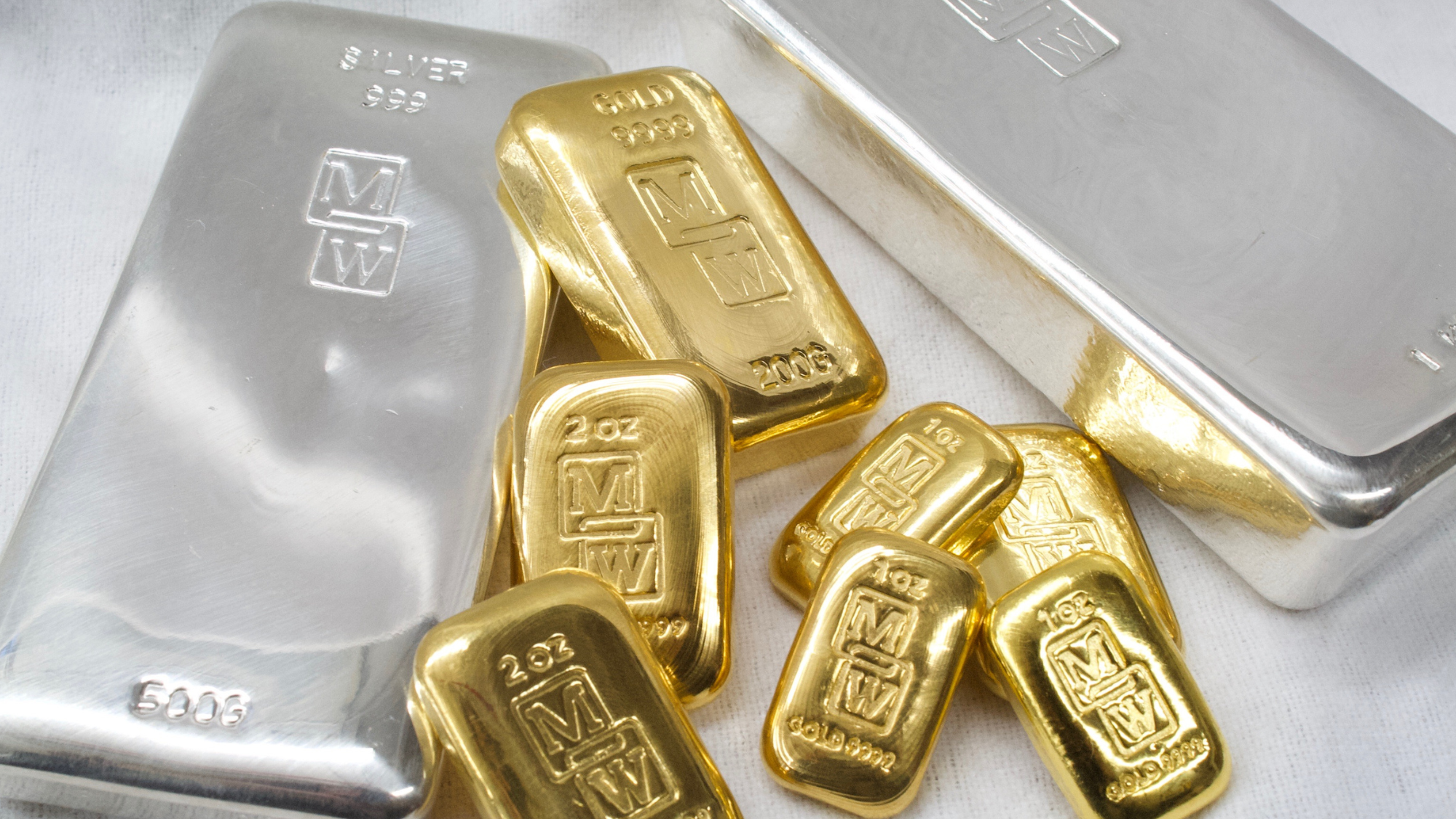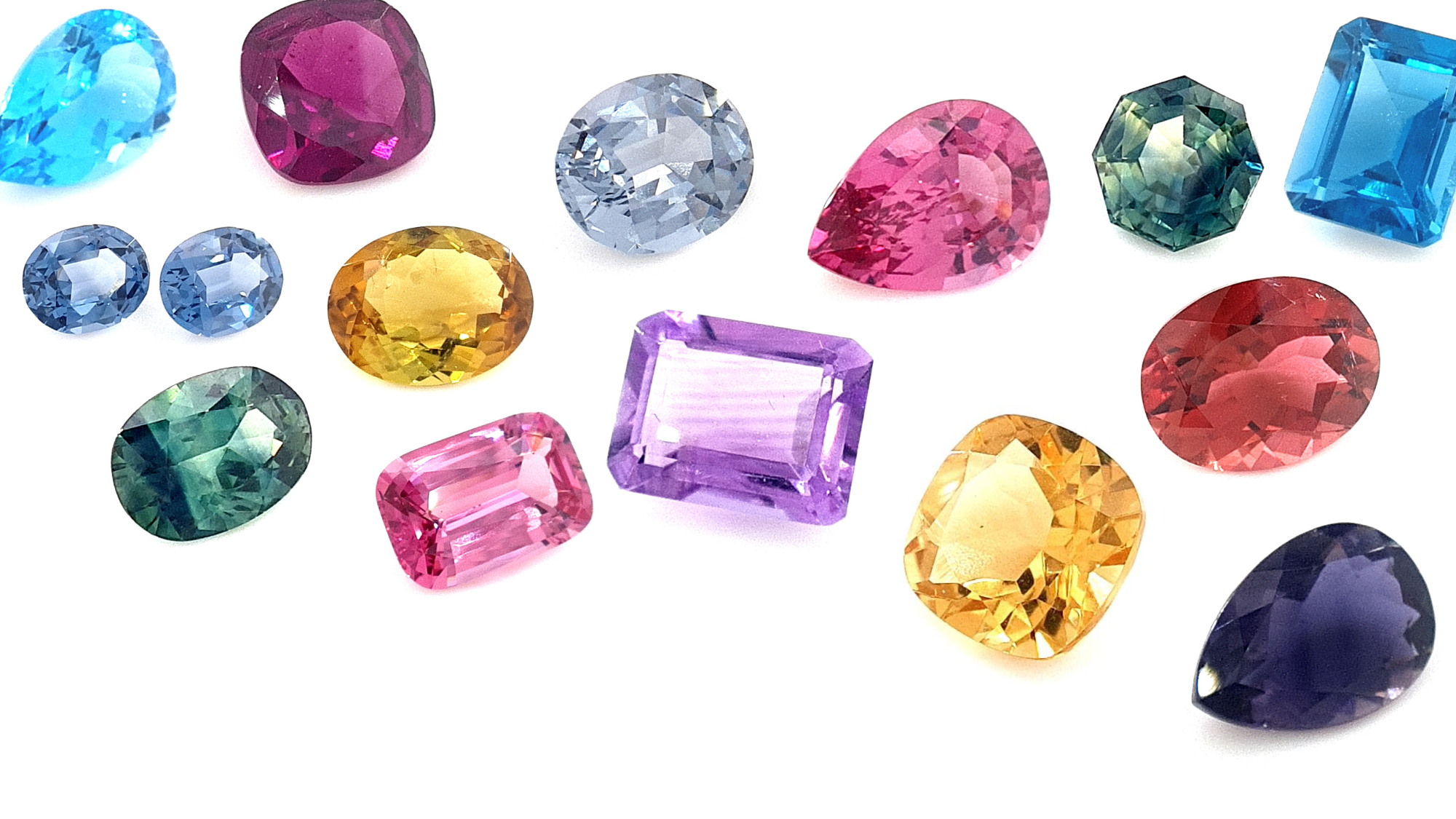Precious Metals are used frequently in jewellery making. These are metallic elements that have a high economic value usually stemming from their natural rarity.
Most precious metals used in jewellery are not very reactive and are ductile, meaning they are able to be manipulated without losing toughness - such as drawing into a thin wire for example. Precious Metals used in Jewellery usually also have great lustre (shine). Precious Metals most commonly used in Jewellery include Gold (Au), Silver (Ag) and Platinum (Pt). Read on to learn more about the precious metals our jewellers commonly use in the workshop as well as a number of less common options that we think are interesting!

Yellow Gold
Yellow Gold is a reasonably soft metal. So for use in jewellery it is usually an alloyed mixture of pure gold and either zinc or copper. The higher the karat amount, the more pure the gold included.
In terms of style, Yellow Gold has that classic “Gold” look. It pairs great with Garnets and Diamonds but it can be softer or easier to break depending on the purity of the Gold used.

White Gold
White Gold is a form of gold with a distinct pale white or cream color; its an alloy of gold and at least one white metal; either nickel, manganese, or palladium, which typically makes up approximately 10% of the alloy. White Gold is often Rhodium plated to give it that bright "white" silver colour.
White Gold goes particularly well with Diamonds and it is a beautiful more affordable alternative to Platinum.

Rose Gold
Rose Gold has a “rose” tint from the gold-copper alloy that composes it. It is also known as “pink gold” and “red gold”, and historically was very popular in Russia, which has also earned it the name “Russian Gold”, though it is most well known as Rose Gold.
This beautiful metal pairs really well with coloured stones and diamonds and is a popular choice at the moment.

Platinum
Platinum is a metal that is incredibly resistant to corrosion, even at high temperatures. Apart from jewellery, Platinum is used for many things, including in the treatment of cancer.
Platinum is the heaviest precious metal and because of its color, it will not cast any tinting on any stones making it a great pairing with Diamonds and white stones.

Silver
Silver has been used in jewellery, currency, and investment bullion, for close to 3000 years! It is extremely malleable and pairs beautifully with most stones.
The Silver alloy most commonly used in jewellery is known as Sterling Silver, a mix composed of 92.5% silver and 7.5% other metals, usually copper or nickel.

Stainless Steel
Stainless Steel is used for jewellery and watches. Originally called rustless steel, Stainless Steel is any one of a group of ferrous alloys. Metals in the alloy vary but Stainless Steel usually contains a minimum of 11% Chromium.
Stainless Steel is becoming more popular as an option for everyday wear jewellery due to its affordability and strength.

Palladium
Palladium is a beautiful silvery-white metal that resembles Platinum. This metal has become much more valued in recent years and is used in a pure form in jewellery, and for combining with gold to form white-gold alloys.
Its near white coloring means that it will not cast any tinting on any stones it is used with.

Tungsten
Tungsten has the highest boiling point and strongest tensile strength of any precious metal, which means it is nearly impossible to scratch. However, under extreme force it will shatter.
It is naturally steel grey and has a subdued look making it a popular choice for mens wedding bands.

Titanium
Titanium is an extremely versatile metal that is resistant to most types of corrosion. It’s value stems from its strength-to-density ratio, the highest amongst any metallic elements. This makes it extremely difficult to bend.
Jewellery made from Titanium is unlikely to easily warp, bend or break.






